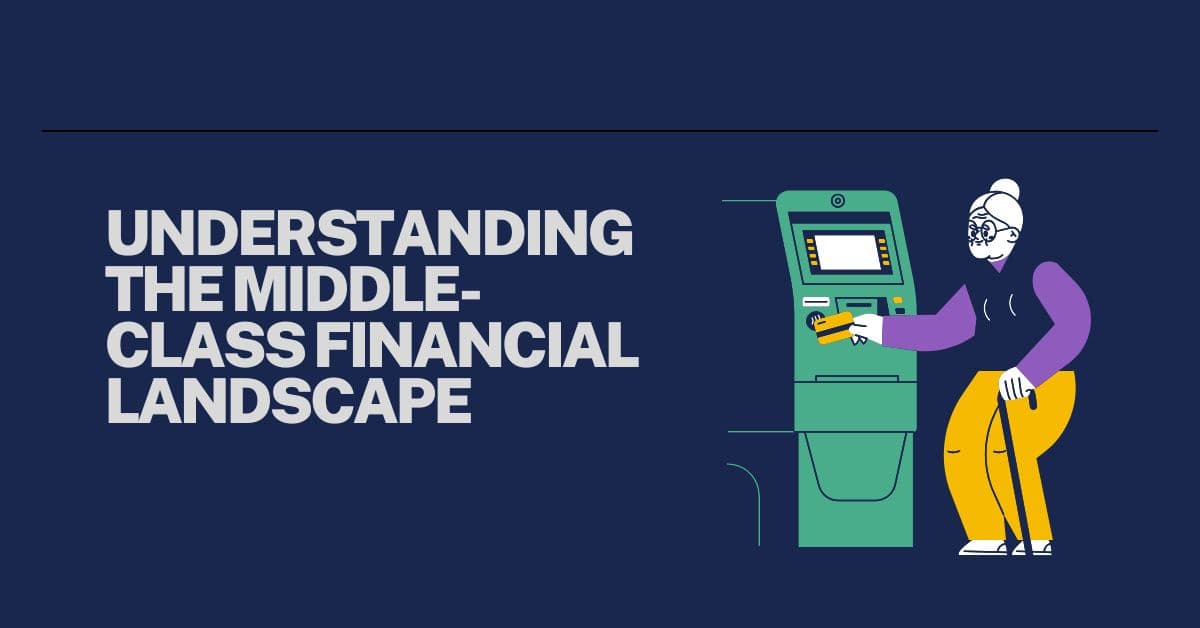7 Monthly Saving Hacks: In 2025, middle-class Indian families, who normally make between ₹5 and ₹20 lakh a year, would be under more and more pressure to manage their money sensibly due to growing inflation and living expenses. Daily costs, such as food and energy bills, may mount up rapidly, leaving little space for savings or financial objectives. The good news? Without compromising your lifestyle, you may save a substantial amount of money each month—possibly between ₹1,000 and ₹5,000—by making small, sensible adjustments. This article offers seven practical money-saving tips for middle-class Indian homes that employ technology, budgeting techniques, and frugal spending to improve your financial well-being. These tips can help you take charge of your finances in 2025, whether you’re saving for debt payback, a family trip, or an emergency fund.
Understanding the Middle-Class Financial Landscape

According to a 2025 research by Rediffusion Consumer Lab (Economic Times), over 31% of Indians are middle class, which is sometimes defined as households making between ₹5 and ₹20 lakh yearly. Rising expenses for healthcare, education, and everyday necessities are among the particular difficulties these families confront; in 2022–2023, family savings fell to ₹14.16 lakh crore, the lowest level in five years (MoSPI). Effective planning is still essential to maximise savings, even if the Union Budget 2025 increased disposable income by introducing tax relief of up to ₹12.75 lakh under the New Tax Regime (Vision IAS). These tips are useful for middle-class families looking to strengthen their financial resilience since they concentrate on monthly spending.
7 Monthly Saving Hacks
1. Smart grocery shopping
For middle-class households, grocery shopping is a significant cost that frequently takes up 20–30% of monthly budgets. Here’s how to save money:

- Utilise Apps for Coupons and Cashback: Apps such as (CashKaro) and (CouponDunia) provide cashback and discounts on food purchases from BigBasket or Amazon Fresh, allowing users to save between ₹100 and ₹300.
- Plan Meals: Make a weekly shopping list and meal plan to cut down on food waste and prevent impulsive purchases, which may save ₹500 a month (MyJar).
- Purchase in Bulk: Save between ₹200 and ₹500 by buying non-perishable goods like rice, dal, or oil in bulk from wholesale marketplaces or applications like (JioMart).
- Compare Prices: To save ₹100 to ₹200, compare prices and locate discounts using applications like (BigBasket) or (Blinkit).
- Loyalty programs: Participate in loyalty programs such as Swiggy One to receive free delivery and exclusive discounts, which may save you between ₹50 and ₹150 every order (DesiDime).
For instance, by using reward apps and meal planning, a family that spends ₹10,000 a month on groceries may save ₹1,000, which they can then put into an emergency fund.
2. Reduce Your Utility Bills
Gas, water and electricity utility costs can put a burden on finances. These tactics may be useful:
- Utilise payment apps: To get cashback or rewards and save between ₹50 and ₹200 each month, pay your bills using (Paytm), (Google Pay), or (Amazon Pay) (NoBroker).
- Energy-Efficient equipment: To reduce monthly power bills by ₹100 to ₹300, select equipment with high Bureau of Energy Efficiency (BEE) star ratings (MoneyMint).
- Monitor Consumption: To track consumption and find areas for savings, use applications like (Money View) or (Axio) to cut costs by ₹50 to ₹150.
- Conservation Tips: Use pressure cookers to save gas, mend water leaks and turn off lights that aren’t in use to save between 100 and 200 a month.
- Credit Card Rewards: Save between ₹50 and ₹100 by using credit cards that give cashback on utility payments, including those provided by (Paisabazaar).
For instance, using Paytm to pay a ₹2,000 power bill with a 5% reward saves ₹100, and using LED lights can save an additional ₹50 per month.
3. Reduce Your Transportation Costs
Whether for personal automobiles or commuting, transportation expenses may add up. To cut them, follow these steps:
- Public Transportation: In places like Delhi or Mumbai, take the buses, metro or trains instead of taxis or private automobiles to save between 500 and 2,000 per month.
- Carpooling: Carpooling may save ₹300 to ₹1,000 by sharing transportation expenses with apps like (Quick transportation) and (BlaBlaCar).
- Petrol Cashback: Save between ₹50 and ₹200 each fill-up by paying for petrol with (Paytm) or (PhonePe).
- Vehicle Maintenance: By increasing fuel economy, routine maintenance may save ₹100 to ₹300 each month.
- Walk or Cycle: Walking or cycling can save ₹50 to ₹200 and improve health for short distances.
- For instance, a Bengaluru professional may save ₹1,500 per month by switching from taxis to metro for their daily journey.
4. Reduce the Cost of Entertainment and Dining
If not properly handled, entertainment and eating out can break the bank:

- Cook at Home: Save ₹500 to ₹1,500 by just going out to eat once or twice a month as opposed to frequently.
- Discount Apps: Save between ₹200 and ₹500 every meal by using (Dineout) or (Zomato Pro) to save up to 50% off restaurant bills.
- Free Activities: Save ₹300 to ₹1,000 a month by going to neighbourhood parks, free museums, or community activities.
- Streaming Services: Instead of spending ₹1,000+ on movie trips, sign up for (Amazon Prime) or (Disney+ Hotstar) for ₹200 to ₹500 per month.
- BookMyShow Offers: Save ₹200 to ₹400 on movie tickets by using (BookMyShow).
For instance, a family may save ₹1,200 per month by substituting home-cooked meals and Dineout savings for two ₹1,000 restaurant visits.
5. Manage Subscription Services
Savings can be subtly undermined by unused subscriptions:
- Examine Subscriptions: Save ₹200 to ₹600 per month by cancelling unwanted services like streaming or gym subscriptions.
- Share Plans: Save ₹100 to ₹300 by splitting family plans with relatives for (Netflix) or (Spotify).
- Track Free Trials: To prevent ₹100 to ₹500 costs, set reminders to end trials before they turn into paid memberships.
- Track with Apps: To make sure no charges are overlooked, keep an eye on subscriptions using (Money View) or a spreadsheet.
For instance, terminating two unneeded ₹300 subscriptions results in a monthly savings of ₹600, which is sufficient for a modest investment.
6. Avoid Impulse Buys
Budgets can be derailed by impulsive purchases:
- Shop with a List: Make a list for every purchase to prevent pointless purchases and save between ₹500 and ₹1,500 each month.
- 24-Hour Rule: Use the 24-Hour Rule to cut down on impulsive spending by ₹200 to ₹1,000 by waiting 24 hours before purchasing non-essentials.
- Unsubscribe from Emails: To resist temptation, choose not to receive retailer marketing emails.
- Use Cash: Paying using cash saves between ₹100 and ₹500 when compared to using a credit card.
- Cashback on Planned Purchases: Save ₹100 to ₹300 on essential purchases by using (CashKaro).
For instance, utilising CashKaro for scheduled purchases instead than making an impulsive ₹2,000 gadget purchase saves ₹2,300 every month.
7. Reduce Finance and Banking Fees
If not controlled, banking fees can mount up:
- Select Zero-Balance Accounts: To save ₹100 to ₹300, choose accounts from (HDFC Bank) or online banks that don’t charge minimum balance fees.
- Use UPI: To avoid costs and save between ₹50 and ₹200, do transactions using (PhonePe) or (Google Pay).
- Set Payment Reminders: Save ₹100 to ₹500 by avoiding late fees on credit cards or invoices by using (Money View).
- Automatic Payments: To guarantee on-time payments and save penalties, set up auto-pay for your recurring invoices.
- Investigate Digital Banks: For better interest rates and reduced expenses, use fintech applications like (Jupiter).
For instance, adopting UPI and moving to a zero-balance account might save ₹200 per month.
Frequently Asked Questions (FAQs)
How much can these hacks save me?
The amount you save each month might vary from ₹1,000 to ₹5,000, depending on your income and expenses.
Are low-income households able to use these hacks?
Yes, strategies that work for all budgets include using discount apps or public transportation.
Which applications work best for keeping track of spending?
For planning and tracking expenses, [Money View]([invalid url, do not cite]) and [Walnut]([invalid url, do not cite]) are great resources.
Are these hacks open to families?
Of course! To make saving enjoyable, include family members in meal planning or look for free activities.
For these tricks, do I require a financial advisor?
A financial advisor can assist in customising plans for intricate financial objectives, while it is not required.
An Example from Real Life
- Situation: These hacks are used by the Sharma family in Delhi, who make ₹60,000 a month.
- Grocery Shopping: Using (CashKaro) and meal planning, grocery shopping may save ₹800.
- Utility Bills: Saves ₹300 by switching to LED lights and paying with (Paytm).
- Transportation: Saves 1,200 by switching to metro.
- Dining: Saves ₹600 by limiting trips and using (Dineout).
- Subscriptions: Save ₹400 by cancelling unused streaming.
- Impulse Buys: Prevents impulsive purchases of ₹1,000.
- Banking Fees: Saves ₹200 by using UPI.
- As a result, ₹4,300 is saved each month and sent to an emergency fund savings account.
Conclusion
These seven money-saving tips for middle-class Indian families in 2025 provide practical ways to reduce monthly costs and increase financial stability. You may save thousands without making significant changes by using applications like (CashKaro), (Paytm), and (Money View), as well as by forming routines like meal planning and taking public transit. Involve your family, start with one hack, and get advice from a financial expert for individualised tactics. Take charge of your money now to ensure a better tomorrow!
Disclaimer: Individual savings results may differ. For individualised guidance, speak with a financial professional.
52 Week Savings Challenge India – Join Now, Don’t Miss Week 1
30-Days Savings Challenge Every Indian Family Should Try!
Siemens NSE Share Price Breakout: Secure Your Savings Today!
Swiggy Share Price NSE: Top Saving Strategies Before You Invest!

